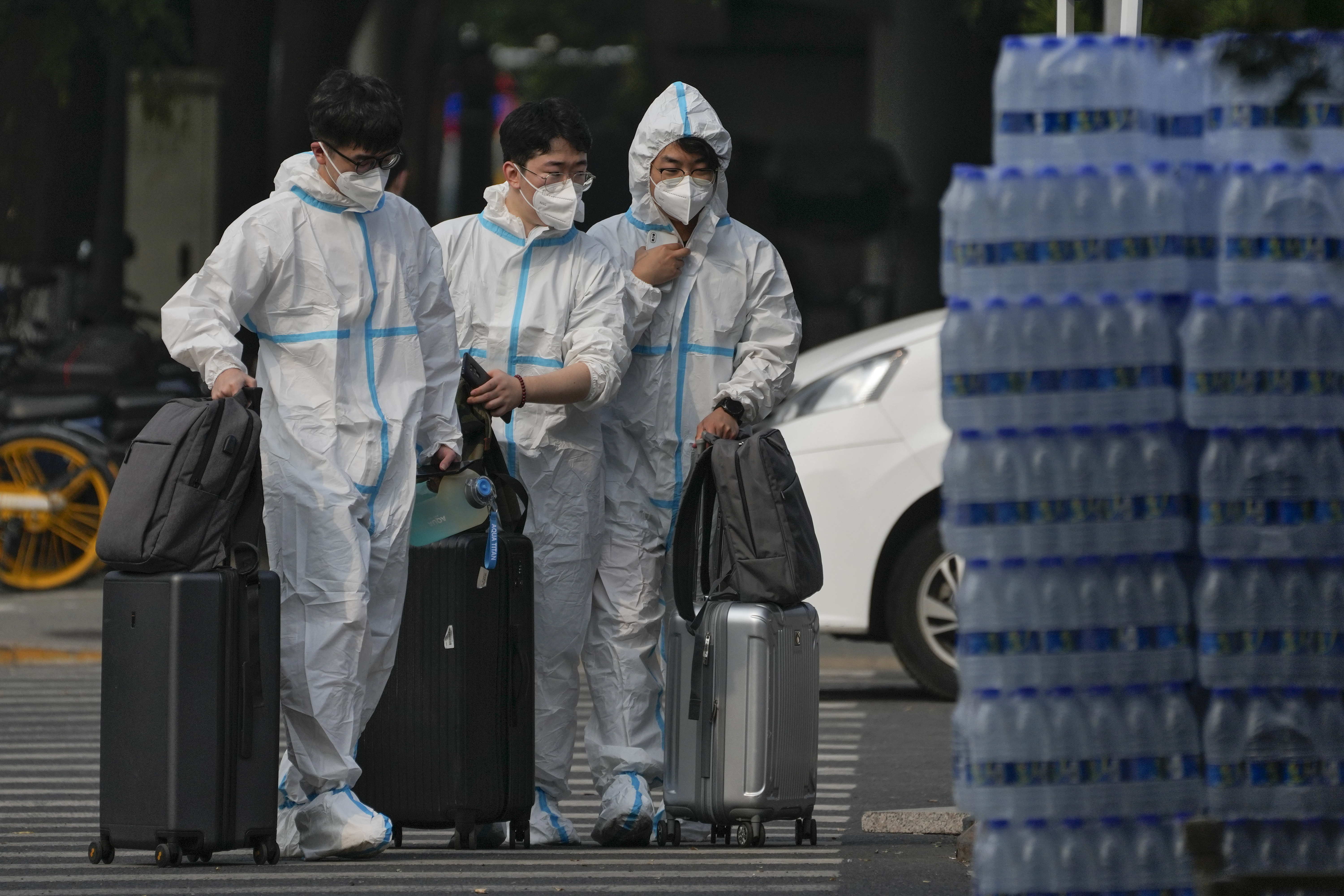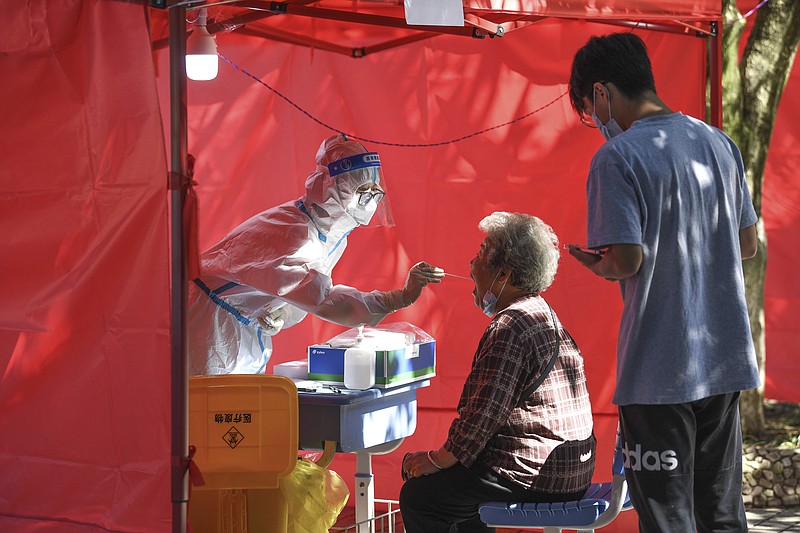GENEVA -- The head of the World Health Organization said Wednesday that the number of coronavirus deaths worldwide last week was the lowest reported in the pandemic since March 2020, marking what could be a turning point in the years-long global outbreak.
At a news briefing in Geneva, WHO Director-General Tedros Adhanom Ghebreyesus said the world has never been in a better position to stop covid-19.
"We are not there yet, but the end is in sight," he said, comparing the effort to that made by a marathon runner nearing the finish line. "Now is the worst time to stop running," he said. "Now is the time to run harder and make sure we cross the line and reap all the rewards of our hard work."
In its weekly report on the pandemic, the U.N. health agency said deaths fell by 22% in the past week, at just over 11,000 reported worldwide. There were 3.1 million new cases, a drop of 28%, continuing a weeks-long decline in the disease in every part of the world.
Still, the WHO warned that relaxed covid testing and surveillance in many countries means that many cases are going unnoticed. The agency issued a set of policy briefs for governments to strengthen their efforts against the coronavirus ahead of the expected winter surge of covid-19, warning that new variants could yet undo the progress made to date.
"If we don't take this opportunity now, we run the risk of more variants, more deaths, more disruption, and more uncertainty," Tedros said.
The WHO reported that the omicron subvariant BA.5 continues to dominate globally and accounted for nearly 90% of virus samples shared with the world's biggest public database. In recent weeks, regulatory authorities in Europe, the U.S. and elsewhere have cleared tweaked vaccines that target both the original coronavirus and later variants including BA.5.
Maria Van Kerkhove, the WHO's technical lead on covid-19, said the organization expected future waves of the disease, but was hopeful those would not cause many deaths.
Meanwhile in China, residents of a city in the country's far western Xinjiang region have said they are experiencing hunger, forced quarantines and dwindling supplies of medicine and daily necessities after more than 40 days in a lockdown prompted by covid-19.
Hundreds of posts from Ghulja riveted users of Chinese social media last week, with residents sharing videos of empty refrigerators, feverish children and people shouting from their windows.
On Monday, local police announced the arrests of six people for "spreading rumors" about the lockdown, including posts about a dead child and an alleged suicide, which they said "incited opposition" and "disrupted social order."
Leaked directives from government offices show that workers are being ordered to avoid negative information and spread "positive energy" instead. One directed state media to film "smiling seniors" and "children having fun" in neighborhoods emerging from the lockdown.
The government has ordered mass testing and district lockdowns in cities across China in recent weeks, from Sanya on tropical Hainan island to southwest Chengdu, to the northern port city of Dalian.
LONG COVID IN EU
New research suggests at least 17 million people in the European Union may have experienced long covid-19 symptoms during the first two years of the coronavirus pandemic, with women more likely than men to suffer from the condition, the World Health Organization said Tuesday.
The research, conducted for the WHO/Europe, was unclear on whether the symptoms that linger, recur or first appear at least one month after a coronavirus infection were more common in vaccinated or unvaccinated people. At least 17 million people met the WHO's criteria of long covid-19 -- with symptoms lasting at least three months in 2020 and 2021, the report said.
"Millions of people in our region, straddling Europe and Central Asia, are suffering debilitating symptoms many months after their initial covid-19 infection," said Hans Henri P. Kluge, WHO Regional Director for Europe, during a conference in Tel Aviv.
The modeling also suggests that women are twice as likely as men to experience long covid-19, and the risk increases dramatically among severe infections needing hospitalization, the report said. One-in-three women and one-in-five men are likely to develop long covid-19, according to the report.
"Knowing how many people are affected and for how long is important for health systems and government agencies to develop rehabilitative and support services," said Christopher Murray, director of the Institute for Health Metrics and Evaluation, which conducted the research for the WHO.
The research, which represents estimates and not actual numbers of affected people, tracks with some other recent studies on the constellation of longer-term symptoms after coronavirus infections.
A U.S. study of veterans published in Nature Medicine in May provided fresh evidence that long covid-19 can happen even after breakthrough infections in vaccinated people, and that older adults face higher risks for the long-term effects. The study showed that about one-third who had breakthrough infections exhibited signs of long covid.
A separate report from the Centers for Disease Control and Prevention found that up to a year after an initial coronavirus infection, 1 in 4 adults aged 65 and older had at least one potential long covid-19 health problem, compared with 1 in 5 younger adults.
Most people who have covid-19 fully recover. But the WHO in Europe report on Tuesday estimated that 10% to 20% develop mid- and long-term symptoms such as fatigue, breathlessness and cognitive dysfunction.
 People wearing protective suits with their luggage enter the shuttered Communication University of China in Beijing, Monday, Sept. 12, 2022. Hundreds students at China's premier college for broadcast journalists have been sent to a quarantine center after a handful of COVID-19 cases were detected in their dormitory. (AP Photo/Andy Wong)
People wearing protective suits with their luggage enter the shuttered Communication University of China in Beijing, Monday, Sept. 12, 2022. Hundreds students at China's premier college for broadcast journalists have been sent to a quarantine center after a handful of COVID-19 cases were detected in their dormitory. (AP Photo/Andy Wong)